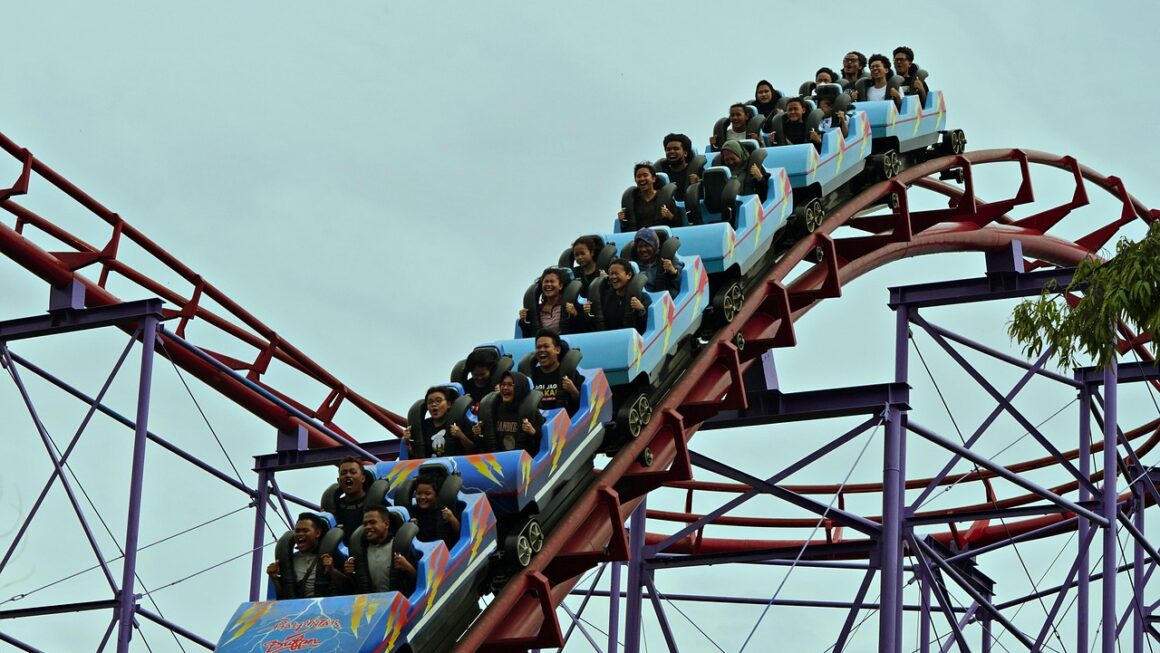Movie premieres: the glitz, the glamour, the anticipation – they represent the culmination of years of hard work and creative vision. More than just a screening, they’re carefully orchestrated events designed to generate buzz, celebrate the film’s release, and set the tone for its box office success. From the red carpet frenzy to the exclusive after-parties, understanding the anatomy of a movie premiere can provide valuable insight into the world of filmmaking and entertainment marketing. This post will delve into the key elements that make a movie premiere a memorable and impactful event.
What is a Movie Premiere?
A movie premiere is the initial public screening of a film, typically held before its general release. It’s a strategic event intended to create excitement, media coverage, and positive word-of-mouth. Unlike regular screenings, premieres are usually invite-only, attended by cast and crew, industry professionals, critics, and select members of the public.
The Purpose of a Premiere
- Generate Media Buzz: The primary goal is to attract media attention and generate positive press coverage. This includes interviews with the stars, reviews from critics, and photos of celebrities attending the event.
- Build Anticipation: A successful premiere builds anticipation for the film’s release, encouraging audiences to buy tickets.
- Create a Positive First Impression: The premiere sets the tone for how the film is received. A positive reaction from the audience can significantly impact its box office performance.
- Celebrate the Film’s Completion: It serves as a celebration for the cast, crew, and everyone involved in the filmmaking process.
- Attract Distributors and Buyers: For independent films, a premiere can be a crucial opportunity to attract distributors and secure wider release deals.
Key Differences from Regular Screenings
- Exclusivity: Premieres are typically invite-only, whereas regular screenings are open to the general public.
- High-Profile Attendees: Premieres are attended by celebrities, industry professionals, and media representatives. Regular screenings typically only have general moviegoers.
- Red Carpet Events: Often includes a red carpet event, complete with photographers and interviews.
- After-Parties: Premieres often include exclusive after-parties for attendees to celebrate and network.
- Advanced Screening: Premieres happen before the film is released to the general public.
Planning a Movie Premiere: A Step-by-Step Guide
Planning a successful movie premiere requires meticulous attention to detail and a well-defined strategy. This involves coordinating various aspects, from securing a venue to managing the guest list and public relations.
Securing a Venue
- Location, Location, Location: Choose a venue that aligns with the film’s tone and target audience. Consider factors such as seating capacity, technical capabilities (sound and projection), and overall ambiance.
- Negotiating Contracts: Carefully review and negotiate contracts with the venue to ensure you get the best possible deal and that all your requirements are met.
- Accessibility: Ensure the venue is accessible to all guests, including those with disabilities.
- Example: If your film is a big-budget action movie, a large, glamorous theater in a prominent location like Hollywood might be ideal. For an independent art film, a smaller, more intimate theater in a trendy neighborhood could be a better fit.
Managing the Guest List
- Target Audience: Identify your target audience for the premiere, including critics, industry professionals, media outlets, and influencers.
- Invite Distribution: Send out invitations well in advance, providing clear instructions on how to RSVP and what to expect at the event.
- VIP Treatment: Allocate a certain number of tickets for VIP guests, such as the cast, crew, and studio executives.
- Security: Arrange for adequate security to manage the crowd and ensure the safety of all attendees.
Public Relations and Media Outreach
- Press Release: Prepare a comprehensive press release announcing the premiere and highlighting key aspects of the film.
- Media Kit: Create a media kit that includes high-resolution images, trailers, synopses, and cast and crew bios.
- Media Partnerships: Collaborate with media outlets to promote the premiere and secure coverage.
- Social Media: Utilize social media platforms to generate buzz and engage with potential attendees.
- Example: Partner with film blogs, entertainment websites, and social media influencers to amplify your message and reach a wider audience.
The Red Carpet Experience
The red carpet is arguably the most iconic aspect of a movie premiere. It’s where celebrities showcase their style, give interviews, and interact with fans and photographers.
Coordinating with Celebrities and Their Teams
- Wardrobe: Work with celebrities and their stylists to coordinate their red carpet attire, ensuring it aligns with the film’s tone and the overall aesthetic of the event.
- Interviews: Schedule interviews with key cast members and the director to promote the film.
- Arrival Times: Coordinate arrival times to avoid overcrowding and ensure a smooth flow of traffic on the red carpet.
Managing Photographers and Media
- Photo Opportunities: Create designated photo areas with a backdrop featuring the film’s title and logo.
- Press Credentials: Issue press credentials to authorized media representatives.
- Media Management: Designate a media liaison to handle inquiries and coordinate interviews.
- Live Streaming: Consider live-streaming the red carpet event to reach a wider audience.
Fan Engagement
- Autograph Sessions: Arrange for autograph sessions with the cast and crew to engage with fans.
- Photo Opportunities: Provide fans with opportunities to take photos with the cast and crew.
- Social Media Contests: Run social media contests to generate excitement and give fans a chance to win tickets to the premiere.
After-Party and Networking Opportunities
The after-party provides a more relaxed and intimate setting for guests to celebrate the film’s completion and network with industry professionals.
Selecting a Venue
- Ambiance: Choose a venue that is conducive to networking and socializing.
- Catering: Provide high-quality food and beverages to keep guests entertained.
- Entertainment: Arrange for entertainment, such as live music or a DJ, to create a festive atmosphere.
- Proximity to the Premiere: The venue should ideally be close to the premiere location for convenience.
Networking Strategies
- Name Tags: Provide name tags to help guests identify each other.
- Introductions: Facilitate introductions between guests to encourage networking.
- Designated Areas: Create designated areas for specific groups, such as investors or distributors.
- Example: Creating a VIP area for key investors and distributors can help foster valuable connections and potential partnerships.
Securing Sponsorships
- Identify Potential Sponsors: Identify potential sponsors who align with the film’s target audience and brand values.
- Develop Sponsorship Packages: Create sponsorship packages that offer various levels of benefits, such as logo placement, advertising opportunities, and VIP access.
- Negotiate Contracts: Negotiate contracts with sponsors to ensure you get the best possible deal and that all your requirements are met.
- Example: A luxury watch brand might sponsor a James Bond premiere, aligning its brand with the film’s sophistication and action.
Measuring Success and ROI
Measuring the success of a movie premiere involves evaluating various metrics to determine its impact on the film’s overall performance and brand awareness.
Key Performance Indicators (KPIs)
- Media Coverage: Track the amount and quality of media coverage generated by the premiere.
- Social Media Engagement: Monitor social media activity, including mentions, shares, and likes.
- Box Office Revenue: Analyze the film’s box office performance in the opening weekend and beyond.
- Audience Feedback: Gather audience feedback through surveys and reviews to gauge their reaction to the film.
- Website Traffic: Monitor traffic to the film’s official website and social media pages.
Analyzing Data and Feedback
- Sentiment Analysis: Use sentiment analysis tools to gauge the overall tone of media coverage and social media mentions.
- Audience Surveys: Conduct audience surveys to gather feedback on specific aspects of the film, such as the plot, acting, and visual effects.
- A/B Testing: Use A/B testing to compare different marketing strategies and determine which ones are most effective.
- Example: By analyzing social media sentiment and audience reviews, you can identify areas where the film excelled and areas where it could have been improved.
Adjusting Strategies for Future Premieres
- Lessons Learned: Document the lessons learned from each premiere to improve future events.
- Refine Strategies: Refine your marketing and public relations strategies based on the data and feedback gathered.
- Adapt to Trends: Stay up-to-date with the latest trends in event planning and entertainment marketing.
Conclusion
Movie premieres are complex events that require careful planning, execution, and follow-up. By understanding the various elements involved and implementing best practices, filmmakers and studios can maximize the impact of their premieres and set their films up for success. From securing a suitable venue and managing the guest list to engaging with the media and measuring ROI, every detail matters in creating a memorable and impactful experience. Ultimately, a well-executed movie premiere can generate significant buzz, build anticipation, and contribute to the overall success of the film.




